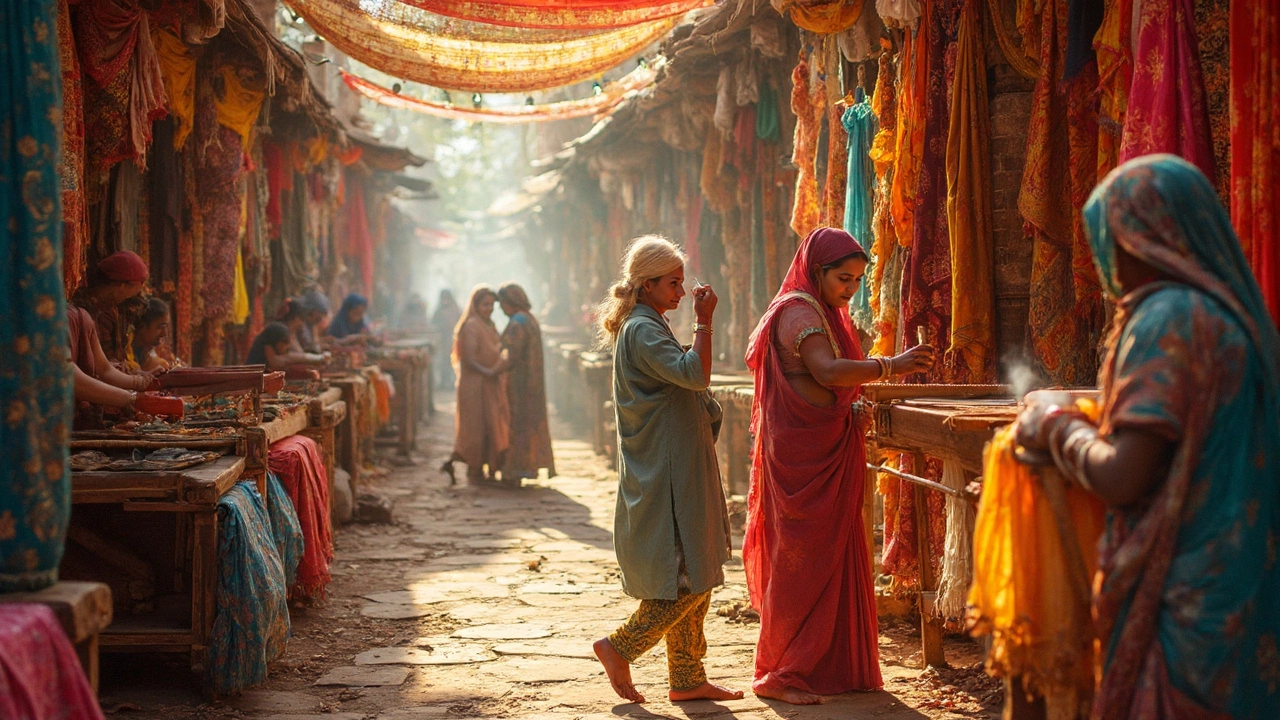Expensive Fabrics India: A Deep Dive into Luxury Textiles
When talking about expensive fabrics India, the term refers to high‑end textiles that command premium prices because of their material quality, intricate weave, and cultural heritage. Also known as luxury Indian fabrics, this category includes everything from pure silk saris to hand‑woven brocades that showcase centuries‑old craftsmanship.
One of the most iconic materials in this space is silk, a natural fiber prized for its sheen, softness, and drape. Silk forms the backbone of many high‑price garments, especially in regions like Varanasi and Mysore where traditional mulberry cultivation still thrives. Another cornerstone is brocade, a richly woven fabric that often incorporates gold or silver threads. Brocade pieces are a staple at weddings and festivals, reflecting both status and regional artistry. Complementing these is handloom, a technique that uses manually operated looms to produce fabrics with unique textures and patterns. Handloom makers add a layer of exclusivity, turning each cloth into a one‑of‑a‑kind masterpiece.
Key Aspects of Expensive Fabrics in India
Understanding why these fabrics carry such a high price tag involves looking at three main factors: raw material cost, labor intensity, and brand heritage. Pure silk, for instance, requires mulberry cultivation, worm rearing, and delicate reeling—processes that drive up the base price. Brocade’s luxury comes from the painstaking insertion of metallic yarns, a skill that takes years to master. Handloom pieces often involve artisans who spend weeks on a single meter of cloth, making each item a labor‑intensive work of art. The expensive fabrics India market also benefits from strong designer influences; contemporary fashion houses blend traditional weaves with modern silhouettes, creating a demand spike that pushes prices even higher.
Regional specialties further shape the landscape. In the north, Banarasi silk is famed for its intricate zari work, while the south offers Kanjeevaram silk noted for its vibrant colors and sturdy texture. West Bengal’s Baluchari brocade tells storytelling scenes through its woven motifs, and the northeast’s hand‑woven Eri silk is valued for its warm, earthy feel. Each region’s distinct style adds layers to the overall market, giving buyers a rich palette of choices based on personal taste, occasion, and budget.
For shoppers, a few practical tips can help navigate this pricey terrain. First, always check the hallmark or authenticity label—gold‑threaded brocades, for example, should carry a reliable purity stamp. Second, feel the fabric; genuine silk feels cool and smooth, while high‑quality handloom fabrics have a slightly uneven but consistent texture. Third, ask about the weaving process; knowing whether a piece is hand‑woven or machine‑woven can guide expectations on durability and price. Finally, consider the care regimen: silk needs gentle hand‑washing or dry cleaning, brocade should be stored away from moisture to prevent tarnish, and handloom textiles often benefit from airing out before placement in wardrobes.
All these angles—material, craftsmanship, regional flair, and buying know‑how—come together to form a complete picture of what makes fabrics “expensive” in the Indian context. Below you’ll find articles that break down these topics further, from price comparisons between Indian and overseas markets to style guides on pairing luxurious textiles with modern outfits. Dive in to discover how you can make informed, stylish choices without getting lost in the hype.
